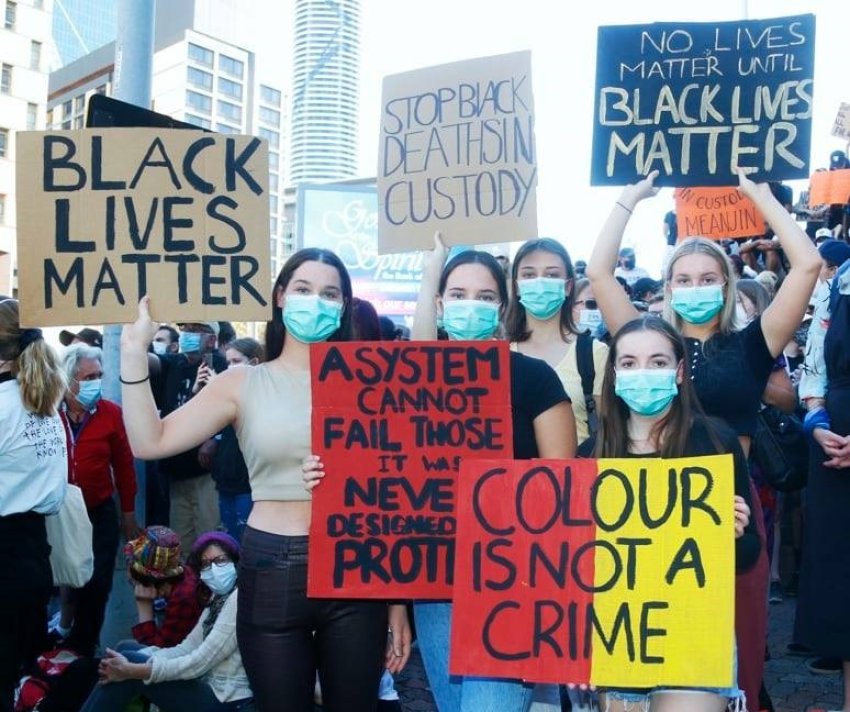
Racism is not fundamentally about individual behaviour – although often that’s how people experience it. It has been built into the institutions of Australian capitalism from its origins in the invasion, dispossession and genocide against the First Nation’s peoples.
Even if, miraculously, every individual racist changed their views, the major forms of racist disadvantage that Aboriginal people experience – from appallingly low life expectancy to the worst housing, education, ill health, joblessness and access to government services – would continue.
Nor would the extra attention they receive from government – the murderous police, jails, courts and child removal departments – disappear.
Racism is central to capitalism because the system benefits from it.
It is a process of divide and rule. Establishing divisions within the working class is fundamental to ruling class attempts to keep control over a society in which they constitute only a tiny minority, making their profits from the labour of the majority.
Constructing an enemy is also important for prosecuting imperialist wars.
This also explains why the targets of Australian racism have shifted over the decades depending on the needs of the ruling class at the time.
When the White Australia policy was introduced in 1901, most Chinese workers suffered. Italians were targeted in late 19th century. Today, First Nations peoples, Muslims, Africans and refugees are the prime targets of anti-migrant racism.
Vilifying these groups to justify Australia’s involvement in occupation and war has resulted in anti-terror laws that have strengthened the state’s power to spy and intimidate.
If refugees can be imprisoned and brutalised, so too can poor people and workers.
Racism has a specific economic use for the ruling class.
In general, societies where racism is more pronounced experience lower wages and poorer working conditions.
Historical divisions between Black and white workers in the southern states of the United States have created a downward pressure on wages for all workers; it has contributed to the confidence of bosses to ruthlessly exploit both Black and white workers.
To this day, workers in the US south are the most poorly unionised and lowest paid in the country. Of the five US states that have no minimum wage laws, all are located in the south (Mississippi, Alabama, Louisiana, Tennessee and South Carolina).
This is not the product of the retrograde views of your average racist; it’s a legacy of slavery, segregation and the prevalence of racism that has weakened the workers’ movement and held back good working conditions.
Those on precarious visas toil in some of the most exploitative industries in the country.
I have witnessed many refugees, asylum seekers, backpackers and international students being paid below the minimum wage, subject to intimidation, sacked if they speak up or join a union and living under the constant threat of deportation.
Racism and national borders make this situation possible. It’s a windfall for the bosses and a disaster for all working class people, both the migrant workers and those struggling to defend hard-won gains.
It’s the structural elements that link racism and capitalism, and over which most people have absolutely no control. But that does not necessarily mean people will swallow anything that is spoon-fed to them.
In recent years, we have seen tens of thousands of people march in Invasion Day rallies and oppose Australia Day.
Educating white people to be nicer to brown people won’t address the very real material underpinnings of inequality: it does not build more houses, or give poor people jobs.
Organising workers to overcome racial divisions and stand together against their bosses and the government is what helps sideline racist ideas.
It is not an accident that the high points of anti-racist struggle in Australia have coincided with the upsurges in class struggle in which workers most clearly see that the bosses are their real enemies and, conversely, that racism only undermines that struggle.
After all, the working class is multi-racial and multi-ethnic – our strength is in our unity. This is how we overcome racism and the system that perpetuates it — a system in which money and power matter more than human lives.
[Lavanya Thavaraja is an organiser with the Migrant Workers’ Centre. This article is based on a talk she gave to a Socialist Alliance forum on February 6.]